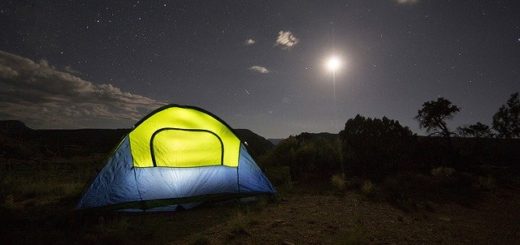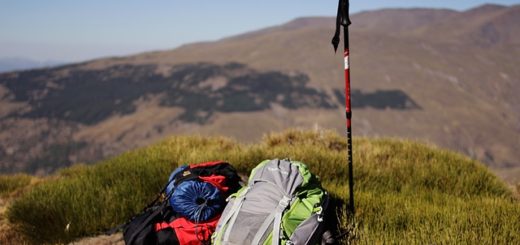4 of the Best Sequoia National Park Backpacking Loops
by Gabriel E ·
This page may contain affiliate links. For more information, see our "About Us" page.
4 of the Best Sequoia National Park Backpacking Loops

Where is Sequoia National Forest?
Nestled in the Southern Region of the Sierra Nevada Mountain Range, you’ll find Sequoia National Park in Southeastern California. Sequoia National Park and the nearby Kings Canyon National Park boast over 800,000 acres of protected national forest, which includes over 600 miles of hiking and backpacking trails! Whether you’re looking for an easy day hike or your next expedition, there are opportunities for all skill level backpackers. Sequoia National Park is home to some of the best backpacking loops in Southern California.
These trails are heavily sought-after destinations thanks to the natural beauty you’ll find within the parks. Sequoia and Kings Canyon National Parks are host to the most significant vertical relief in the lower United States, with the lowest elevation being 1,370ft and the highest peak in the park at 14,505ft.
What Can You Expect to Find in Sequoia National Forest?
Sequoia and Kings Canyon National Parks offer many different types of scenery. As you can imagine, a nearly 15,000ft elevation change can offer many different types of landscapes, ecosystems, and terrain. You’ll find everything from snowcapped mountains, glacial canyons, granite peaks, lake basins, and meadows.
Home to one of the largest species of trees in the world, you’ll find a vast forest of Sequoia Trees towering up to 275 feet. These trees have a soft, yet very protective bark that allows them to power through wildfires within the forest, making these trees some of the oldest in the world. The oldest tree within the park is estimated to be over 3,200 years old! Sequoia National Forest is home to “General Sherman,” which is not only the largest of the sequoias, but it is the largest tree in the world to this date!
In addition to the landscape and magnificent sequoias, you’ll also find many different wildlife species within the parks. While they are beautiful, they are most undoubtedly wild, and you should always keep a safe distance. Wildlife in the park can include coyotes, black bears, mountain lions, snakes, wolverines, and many more.
What to Know Before Planning Your Hike
If you’re a beginner backpacker, be sure to check out the shorter loop trails below, as some of the more challenging trails could be dangerous to start on without an experienced trail partner. When you get up to the more experienced hiking, you’ll find many longer trails that offer a vast amount of hiking opportunities that will test your strength and endurance but prove unbelievably rewarding!
Always check in with ranger stations before hiking in to stay overnight. All trails require a permit to stay overnight. These permits offer safety for the backpacker and limits on crowds within the park. These limitations help preserve the park by avoiding unruly behavior, tampering with the landscape, and preventing damage to the land from overcrowding. Now, let’s move onto the list of best Sequoia National Park backpacking loops!

#1 - Mineral King Loop – 25.6 Mi.
Mineral King Loop, one of the most common trails within the park for experienced hikers, is rated as difficult. Many experienced hikers brag about this trail as the reward of the hike is worth every step on the trail. The Mineral King Loop Trail consists of many different types of scenery throughout, including granite cirques, alpine lakes, meadows, and granite peaks.
Clockwise (head North at from the trailhead) is the most suitable way to hike the trail, as it allows more time to get acclimated to the elevation. Throughout the trail, there is almost 10,000ft of elevation gain! The average gain throughout the trail is around eight percent, while the maximum grade is over fifty percent! These steep inclines are the reason that many trails within Sequoia National Park are considered difficult.
As with all trails, be sure to pack a map with you, as many of the loop trails throughout the National Park intersect with other trails to form the loop. In this case, Mineral King Loop Trail intersects with five different trails throughout, and these other trails will not lead you back to the trailhead. Mineral King intersects with Sawtooth Pass, Lost Canyon Trail, Big Five Lakes Trail, Blackrock Pass, and Timber Gap Trail. The loop itself is comprised of sections of several of these trails.
If you’re feeling adventurous, you can use the Sawtooth Pass to cut out a significant amount of the Mineral King Loop, but it is noted that the trail is extremely difficult and often only marked with rock cairns in most places.
#2 - Giant Forest Loop Trail – 7.5 Mi.
The Giant Forest Loop Trail is one of the easier hikes within the park and is rated between easy and intermediate by most hikers. This loop is comprised of sections from many of the park’s most well-known trails; Crescent Meadow Trail, Circle Meadow Trail, Congress Trail, General Sherman Trail, Trail of the Sequoias, and Tharp’s Log.
This trail is known to many as the best trail to get a short glimpse into the beauty of Sequoia National Park. At 7.5 miles, this would make both an excellent day hiking trail, as well as a relaxed weekend backpacking trail.
If you’re looking for a different route while staying on this loop, there are many intersections throughout that you can take to make your own loop! If you choose to veer off the trail, make sure you have your compass and map with you, as there are many different routes to take on the Giant Forest Loop.
All in all, the Giant Forest Loop Trail is an excellent trail for both beginners and those looking for a relaxed hike!

#3 - Rae Lakes Loop Trail – 41.4 Mi.
If you’re feeling adventurous, Rae Lakes Loop Trail is an excellent loop trail to conquer. While it is one of the most popular backpacking loops in all of Sequoia National Park, it can also be very challenging for those with little hiking experience.
As this trail is growing more and more in popularity, there are many restrictions on the trail. Many, if not all, trails within Sequoia National Park require a permit upon starting your hike, and it is recommended to plan your trip in advance, as only a certain number of hikers are allowed on the trail at one time. Be sure and check regulations at the ranger station before hiking, as there are limits on where you can set up camp and how long you can stay in a single campsite.
Rae Lakes Loop Trail is considered to be hard, both due to the distance of the trail, and the elevation gain of over 7,800ft. Throughout the trail, there are many water access points, allowing many opportunities to filter water for drinking and cooking.
Note: Try to avoid this trail during May and June, as there are several water crossings that are impassible during these times. The crossing near Glenn Pass is often impassible as late as July. The recommended time of the year to backpack this trail is between July and September.
#4 - Crescent Meadow Loop to Chimney Tree and Tharp’s Log – 1.6 Mi.
The Crescent Meadow Loop is the shortest trail on the list, but it is very common amongst short distance backpackers and day hikers. The main loop is 1.6 miles, with an elevation gain of only 150 feet. Due to the short distance and the minimal elevation gain, this is also the easiest hike on the list.
On the Main Loop, you will find Chimney Tree, which is a burnt-out Sequoia tree that you can climb inside of with plenty of room to move around! You will also find Tharp’s Log, which is a fallen Sequoia tree that was used as a shelter by the early pioneers of the area. Tharp’s Log was named after Hale Tharp, one of the first non-Native-Americans to enter the Sequoia National Forest.
If you are looking to get more miles in on your hike, you can take the Crescent Meadow Loop to the High Sierra Trail (intersecting the loop at the southernmost point of the loop) and follow that trail to the Trail of the Sequoias. Once you reach the Washington Tree Trail, continue South, and you will find yourself back on the Crescent Meadow Loop.
In addition to Chimney Tree and Tharp’s Log, you’ll find beautiful views of the famous Sequoias, beautiful meadows covered in wildflowers, and many small streams and rivers!
4 of the Best Sequoia National Park Backpacking Loops - Conclusion
Whether you’re a beginning hiker or an experienced through-hiker, there’s a variety of backpacking loops for you in Sequoia National Park. When you plan your trip to the Sequoias, always remember to bring a map and compass, as there are many trails that intersect throughout the park, even on the loop trails.
Whenever in doubt of your route, there are trail maps available both online and at the ranger station! If you’re looking for more west coast backpacking loops, consider checking out our article “Top 3 Backpacking Loops in Olympic National Park“. Happy travels!



